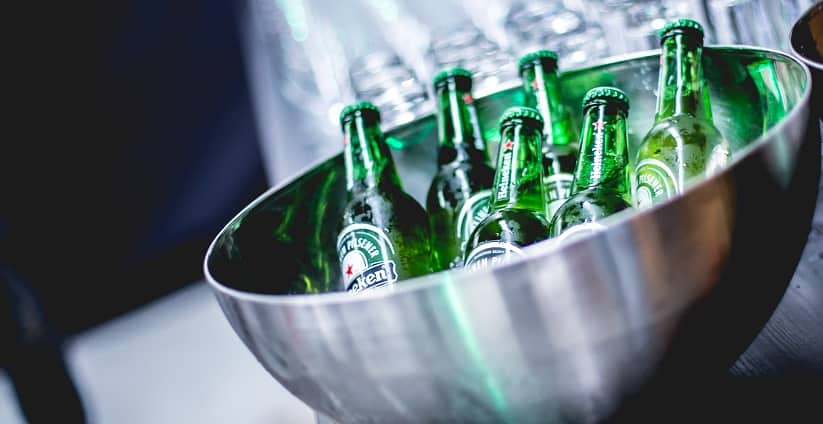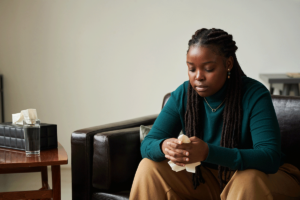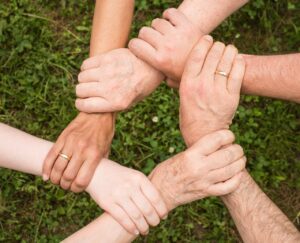College years are universally deemed as a time of personal exploration for young adults. The transition away from family life in the home to living alone on or off campus is a big one. Students in Washington state universities will meet new people, join larger social groups and may even become a part of a sorority or fraternity. During this time, college students may feel pressured by their peers and university culture to drink, abuse substances and party. They are also going to be learning and training for their future job. This can come with some frustration and stress that can lead to some unhealthy behaviors including increased drinking. By drinking, they may be inhibiting their ability to successfully master the skills they are being taught while in college. That in turn, increases stress.
Binge Drinking at Universities in WA State: What Are the Risks?
Binge drinking is defined by the National Institute on Alcohol Abuse and Alcoholism (NIAAA) as “a pattern of drinking that brings blood alcohol concentration (BAC) levels to 0.08 g/dL. This typically occurs after 4 drinks for women and 5 drinks for men—in about 2 hours.” The Substance Abuse and Mental Health Services Administration (SAMHSA) defines it as “5 or more alcoholic drinks for males or 4 or more alcoholic drinks for females on the same occasion (i.e., at the same time or within a couple of hours of each other) on at least 1 day in the past month.” Even with the years of study concerning college students and drinking, more than 1,800 students die each year from alcohol-related incidents. Another 600,000 are injured while drunk, and about 100,000 are sexually assaulted. For the last twenty years, the number of students binge drinking is still around 40 percent. Binge drinking comes with many risks as well. These include:
- Unintentional injuries (e.g. falling down, car accidents)
- Intentional injuries (sexual assault, use of a deadly weapon)
- Sexually transmitted diseases (STDs)
- Alcohol poisoning
- Unintended pregnancy
- Children born with Fetal Alcohol Syndrome
- Liver disease
- Brain damage
- Elevated insulin levels that could lead to diabetes
- Sexual dysfunction
- High blood pressure
- Stroke
- Cardiovascular diseases
Sororities and Fraternities Are at the Center of Drinking Culture in Colleges
Greek life has a reputation for hard partying and binge drinking, but do those students who join sororities and fraternities really drink more? For years, concerns over alcohol on college campuses have driven research and studies on the issue. In 2001, the following study took place to figure out the connection between alcohol use and Greek life at universities. The study, “”Short and long-term effects of fraternity and sorority membership on heavy drinking: a social norms perspective,” provides a cross-sectional analysis that examines the possibility that other factors–namely academic ability, gender, peer norms, and personality traits–may play a pivotal role in determining heavy drinking habits and level of Greek life involvement by college students. The study was conducted by Kenneth J. Sher, Ph.D. and undergraduate Shivani Nanda of the University of Missouri and the Missouri Alcoholism Research Center, and Bruce D. Bartholow, Ph.D., University of North Carolina at Chapel Hill. “The findings show that members of fraternities and sororities do drink more heavily than their non-Greek peers, referred to as the ‘Greek Effect.’ Research also shows that the Greek Effect results from the perception among Greeks that their friends drink heavily and support excessive drinking habits.” In 2012, there was a string of incidents that happened to students at WA State University. One student fell three stories after attempting to leap to another balcony. Another two students from Phi Kappa Tau and Lambda Chi Alpha tried a similar feat, only to fall. Then there was the story of Kenny Hummel, an 18-year old who drank so many energy drinks and alcohol that his blood alcohol reached a lethal level – 0.40. That is five times the legal intoxication limit. Concern over these incidents and the possibility of more drove Washington State University to ban all sorority and fraternity events during the fall semester of 2016. According to CBS News, “The school’s Interfraternity Council made the move along with the Panhellenic Council, an umbrella organization for some sororities. The councils made the announcement in a letter to students, staff and others, citing alcohol and drug-use issues, rapes, and hospitalizations as the reason for banning all events as of 5 p.m. Monday. The letter directly references a concerning rise in the number of assaults, rapes, falls and hospitalizations, saying the incidents and accompanying negative reputation put the future of Greek Life at the school in jeopardy.”
Drinking on Campus in WA State Can Be Dangerous for Everyone
Heavy drinking is a key factor in sexual assaults on college campuses. A poll by the Washington Post and Kaiser Family Foundation found that twenty percent of women and five percent of men reported being sexually assaulted either by physical force or while incapacitated. Most of these people admitted drinking more than they should have, had more sexual encounters in school and did so at campus fraternities and sororities. These numbers are staggering and prove that drinking has a major influence on college sexual assault cases. Sixty-two percent of women in this study said they were drinking prior to their sexual assault. Even more devastating, 27 percent told no one about the incident.
Self Medicating with Alcohol on College Campuses in the State of Washington
It’s not uncommon to see students pushing limits with alcohol at parties due to the pressure of their studies. Students who already suffer from disorders such as ADHD, depression or anxiety may find themselves self-medicating with alcohol. This may seem to work in the short term, but substance abuse has a way of masking mental health disorders. This behavior can have lasting effects including alcoholism into adulthood and physical health issues such as liver and heart damage. These habits can carry over in a significant way, ruining lives down the line. This is particularly true for women. One study says, “During the postgraduate survey, women who were in sororities still drank more than women who were not, suggestive of a sex difference in the origination and duration of Greek effects.”
How Drinking on College Campuses in WA State Can Create an Addict
We already know what binge drinking is, but how can it lead to addiction? Well, science suggests that the more drinking-related issues a teen experiences before the age of 18, the more likely they would be diagnosed with alcoholism by age 25. Clearly, young adulthood is a time to make good habits and fall into bad habits when it comes to alcohol use. It’s important for one to also understand what low-risk drinking is in comparison to binge drinking: “For women, low-risk drinking is defined as no more than 3 drinks on any single day and no more than 7 drinks per week. For men, it is defined as no more than 4 drinks on any single day and no more than 14 drinks per week. NIAAA research shows that only about 2 in 100 people who drink within these limits have alcohol use disorder.” For a young adult, those guidelines show that it is possible to have a few drinks and not be at risk for substance abuse disorder, but does a young adult have the self control to say “no” when they are presented with the opportunity to drink?
How to Talk to a Student About the Dangers of Drinking on Campus
Despite the efforts to discuss and educate students on the dangers of alcohol abuse and binge drinking on campus, the number of students drinking hasn’t declined. The New York Times states, “Educators and researchers who lived through this period say a combination of exhaustion, frustration, inertia, lack of resources and campus and community politics derailed the national conversation about college drinking. Taking on the problem proved tougher than anyone had thought.” And today, few colleges are even enforcing their alcohol policies at events like tailgates and in dormitories and sorority/fraternity houses. Only two percent of schools work with local bars about offering discounted drinks. Some hypothesize that the millions of dollars it is costing universities to deal with chronic binge drinking may be what drives them to work harder in the community to keep cheap alcohol inaccessible to students. The loss of money may be what pushes officials to crack down on campus parties.
What to Do if You Suspect a Student Is Experiencing Alcohol Dependency
Young adults don’t tend to identify themselves as having drinking problems. It’s important that they be screened in places they are most likely to seek treatment for alcohol-related injuries or illness such as hospital emergency rooms, college counseling centers and worksites. Again, traditional alcohol education programs have not resulted in decreased drinking among students in WA state. According to the NIAA, studies have shown that young adults are more likely to respond better to brief, intensive interventions than traditional long-term treatments often used for adults with longer histories of alcohol use. Brief interventions usually involve one to four sessions with a trained interventionist (e.g. a physician, counselor or psychologist). Each session needs to last from several minutes and up to one hour. These kinds of interventions are really useful for people who don’t have longstanding drinking problems.
How to Avoid Drinking in College in Washington State When People Are Pressuring You
The hardest part about drinking while at university is the pressure to resist. It’s hard to say “no” when EVERYONE is participating in what could devolve into risky behavior. If you can’t find friends that don’t like to drink or prefer not to, here are some ways to not drink and still socialize while in college. Some of these tips do involve being able to utilize willpower and confidence. So, if you ever find yourself in a situation that you can’t say “no,” then excuse yourself. It’s the safest plan to avoid consuming alcohol when you don’t want to.
- It’s okay to sip a soda or water at a party.
- You don’t have to give a reason why you’re not drinking. You are in charge of your actions.
- Have a good sense of humor about it. When you meet someone who is pushy, it’s easy to break the ice with a good joke.
- Don’t expect people to cater to your non-alcohol needs. Bring your own alcohol-free beverage!
- Stick around and have fun! Don’t feel guilty or shamed for not doing what everyone else is. It is possible to have fun without alcohol.
- If you don’t already, make friends with people who don’t drink. It’s okay to have friends that drink too, but it’s nice to have options when you don’t feel like being a situation that involves alcohol.
- Don’t feel pressured to drink NOW just because you’re being offered an alcoholic beverage, especially if you’re not 21 yet. There’s no rush to do something you’re not ready for. Don’t let anyone make you feel like you’re missing out on something.
College is a wonderful, amazing, transformative experience. It doesn’t have to be marred by substance abuse or addiction. However, if you suspect that you or a loved one is heading toward alcohol addiction, please reach out to a reputable alcohol rehabilitation center.




